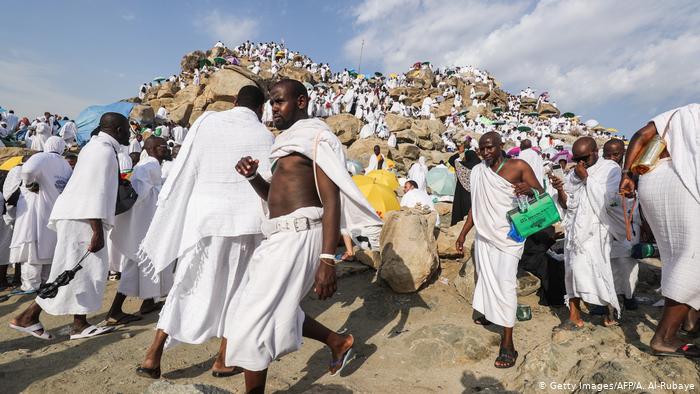Mecca slowly stirred from a seven-month hibernation on Sunday as pilgrims trickled in after Saudi authorities partially lifted a coronavirus ban on performing umrah – a pilgrimage to Islam’s two holiest sites that is undertaken at any time of year.
Millions of Muslims from around the world usually descend on Saudi Arabia for the Umrah and Hajj Islamic pilgrimages.
- Nasarawa Begins Fumigation Of 1587 Public Schools
- Smart Adeyemi Proposes Shariah Law To Fight Corruption
The two share common rites, but the hajj, held once a year, is the main lengthier ritual that is a once-in-a-lifetime duty for Muslims.
Saudi Arabia, which held a largely symbolic hajj earlier this year limited to domestic worshippers, has allowed citizens and residents to start performing umrah as of Sunday at 30 per cent capacity, or 6,000 pilgrims a day.
It will open for Muslims from abroad starting Nov. 1.
Last year the Gulf state drew 19 million umrah visitors.
“All of Mecca is happy today, it’s like the end of a jail term.
“We have missed the spiritual feeling of pilgrims roaming the city,” said Yasser al-Zahrani, who became a full time Uber driver after losing his construction job during a three-month national lockdown imposed in March.
“It was a nightmare … there was barely any work to cover my bills,” he told Reuters.
Before the pandemic, more than 1,300 hotels and hundreds of stores buzzed around the clock to cater to pilgrims visiting the holy cities of Mecca and Medina.
Now many are closed, the windows of some gathering dust.
At midnight, tens of registered pilgrims wearing face masks prepared to enter the Grand Mosque in small groups.
“This year has been heavy and full of tragedies. I am praying for God’s forgiveness for all mankind,” said Eman, a Pakistani national who resides in Saudi Arabia, accompanied by her daughter.
As pilgrims circled the Kaaba, a stone structure that is the most sacred in Islam and the direction which Muslims face to pray, officials made sure they kept a safe distance apart.
Worshippers are no longer allowed to touch the Kaaba, draped in black cloth adorned with Arabic calligraphy in gold.
Some enjoyed a respite from the usual crowding. “This is the easiest umrah I have ever made,” said a Saudi who identified himself as Abu Fahad.
Pilgrimage is the backbone of a plan to expand tourism under Crown Prince Mohammed bin Salman’s drive to diversify the economy of the world’s top oil exporter.
It aimed to boost umrah visitors to 15 million by 2020, a plan disrupted by coronavirus, and to 30 million by 2030.
Religious pilgrimage generates $12 billion in revenues from worshippers’ lodging, transport, gifts, food and fees, according to official data.
Saudi Arabia hosted a drastically reduced haj in late July for the first time in modern history, with a few thousand domestic pilgrims instead of the usual white-clad sea of some 3 million Muslims.
Near the Grand Mosque, hotels at high-rise towers were mostly empty and shopping malls closed hours before the resumption of umrah. Dozens of stores and restaurants were shut.
Economists have estimated Mecca’s hotel sector may lose at least 40 per cent of pilgrimage-driven income this year.
Five hotel workers, who declined to be identified, said they were put on unpaid leave during the lockdown and said hundreds of others in the hospitality sector were laid-off.
“We forgot what it feels like to actually interact with people, everything was online over the past months,” a supermarket employee, who declined to be named, said as he restocked empty shelves. (Reuters/NAN)

 Join Daily Trust WhatsApp Community For Quick Access To News and Happenings Around You.
Join Daily Trust WhatsApp Community For Quick Access To News and Happenings Around You.

